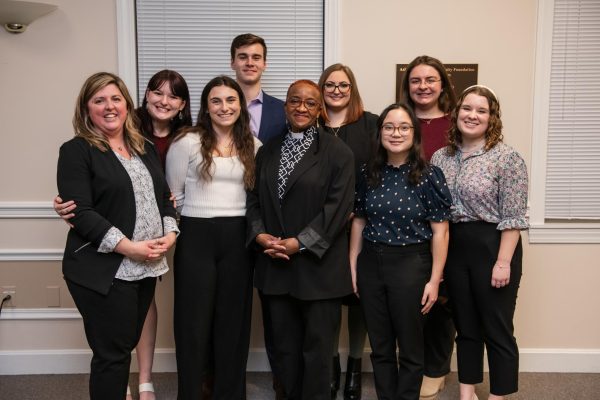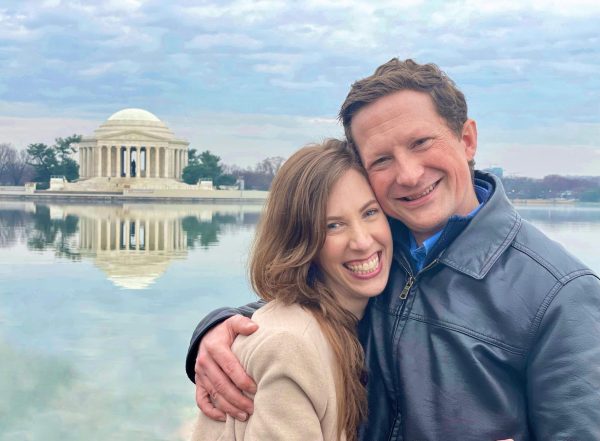Beauty from strife: 2017 Faculty Art Show
February 17, 2017
sculpture of the woman stands crying in the gallery. Crying so hard that her tears have created the dress she is wearing.
“And then she’s got her family and children up on top,” the artist Janis Mars Wunderlich said. “They’re in this little boat, and the boat isn’t actually touching the water. You get the sense that she’s trying to protect them and keep them safe from the flood. But they’re also precariously balanced like they could tip over and fall into the water at the same time.”
The annual Ashland University Faculty art exhibition at Coburn Gallery runs through Feb. 19, showcasing the art and sometimes the personal stories of the AU art faculty.
Mars Wunderlich has been an art instructor at Ashland University for two years.
“I’ve always tried to make my art an honest reflection of what’s happening in my world around me,” Mars Wunderlich said. “I see them a little bit like journal entries in a way. They record moments, or memories, or emotions, that I’m having around different topics.”
The main themes in her art are divorce, mothering, love, and rebuilding after a tragedy she said.
“I wanted to address that parenting and mothering is wonderful and beautiful, but there’s also all the complicated questions,” Mars Wunderlich said.
Her sculptures show her desire to protect her children, even when she felt she may have failed them.
“I was thinking about my children when I got a divorce, worrying that I was ruining them, and ruining my family,” Mars Wunderlich said. “Nobody wants to have a divorce.”
Instructor Cynthia Petry has been the gallery director at Ashland University for 21 years. Her art was created with images of vintage women’s magazines.
Petry feels that some of the ideas about women and equality implied in her work with the magazines still comes into play today.
“Many of the issues are still relevant to women, maybe in different circumstances,” Petry said. “I think this idea of being equal still comes into play.”
Petry wants to see women’s rights and equality to continue for her daughter and granddaughter.
“It gets us to sort of see the past and its place today,” Petry said.
Michael Bird, assistant professor in the art department, has been teaching at Ashland University for two years. Much of the art he created for the show features humans in bare flesh. One of the most important elements in the art is the skin, he said.
“The skin itself is kind of a metaphor for what contains the inside of us versus the outside of us,” Bird said. “So a lot of what we view as being sensitive is about the exposure of that skin and if we break the skin, do we let a little bit of what’s inside of us out or a little bit of what’s outside of us in?”
Bird’s work is often times influenced by events in his personal life.
“Each piece is kind of a meditation on sometimes specific relationships,” Bird said. “But I try to leave my work open to interpretation. The pieces mean something to me, but they don’t necessarily have to mean something to you.”
Mars Wunderlich also feels that although much of her work is grounded in deeply personal situations, viewers should remain free to ponder the art, and interpret it in different ways.
“Even though these pieces are really personal to me, they’re about my personal struggle, I really hope people can connect with them on a more personal level,” she said.
Mars Wunderlich feels that the show helps viewers see the style of art taught by the professors at Ashland and it gives the students insight into their professors’ artistic style.
“We aren’t just educators,” Mars Wunderlich said. “We are learners as well, we are artists as well, we are makers.”











